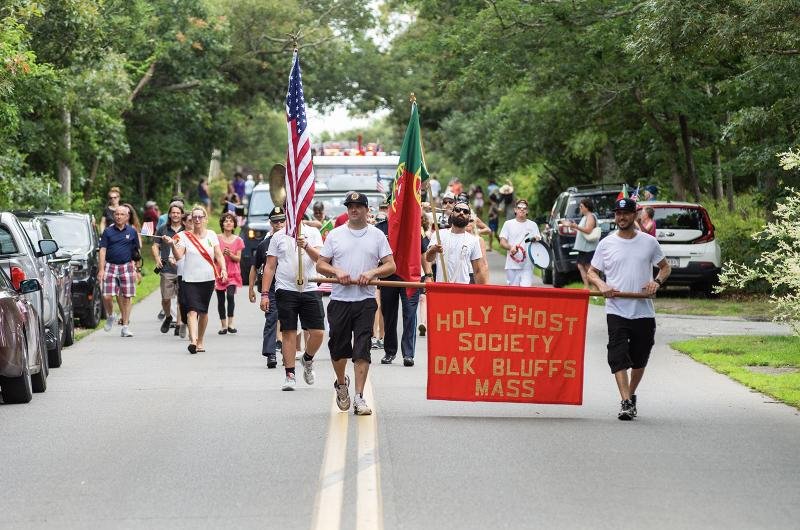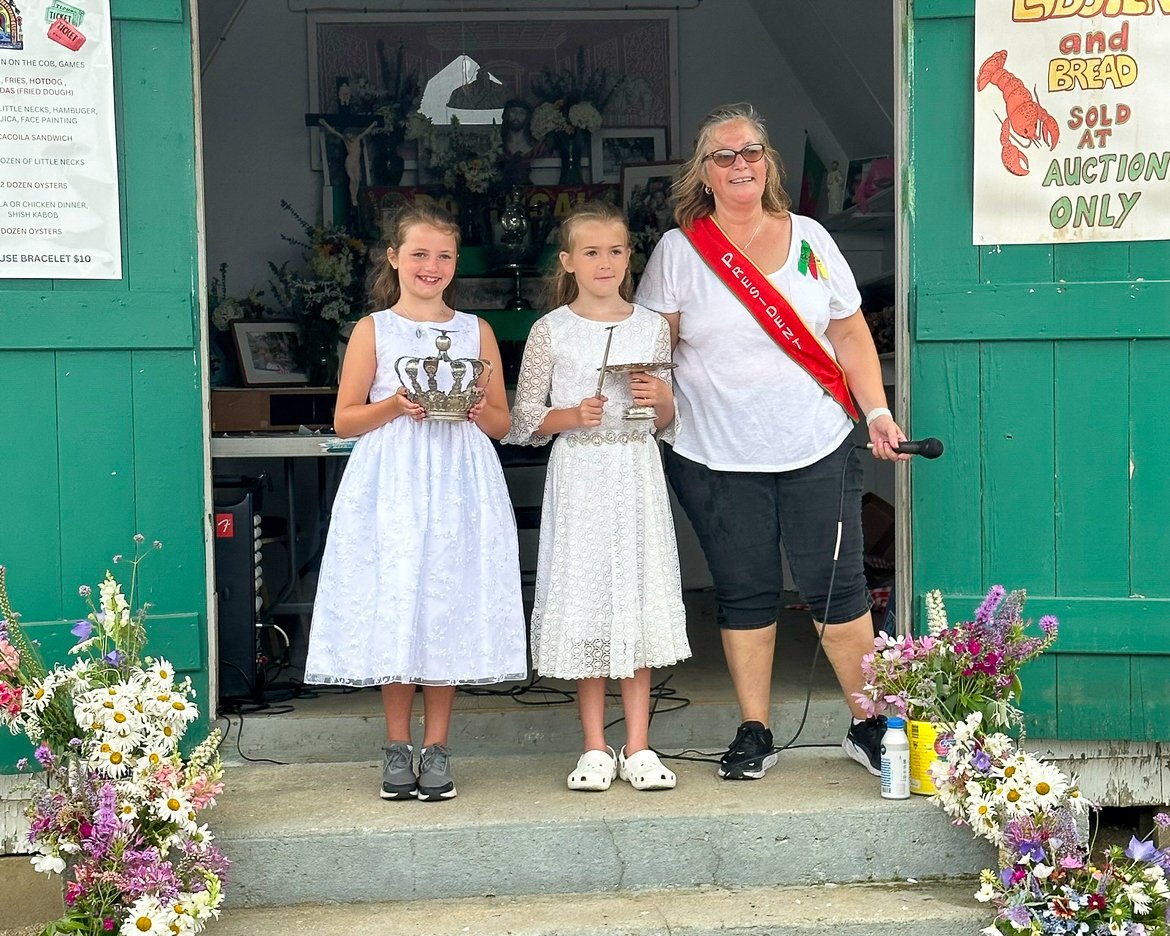
Feast of the Holy Ghost
Experience the rich traditions of the Holy Ghost Feast as a symbol of unity and kindness, with centuries of history connecting Azoreans worldwide, and join us for our annual celebration every third full weekend in July – a cherished tradition since the 1920s on Martha's Vineyard.
The Feast of the Holy Ghost traces back to Queen Isabel, a Princess of Aragon in the 13th century (1271- 1336), born to King Peter III and Constance II of northeast Spain. At age 10, she was arranged to marry 19 year old King Dom Diniz of Portugal and their wedding was celebrated in 1288, when Isabel was 17.
After a great earthquake, there was drought, crop failure and finally a cruel famine in Portugal that broke the people’s faith. In their desperation and suffering, the people gathered together to pray to the Holy Spirit for help. The pious Queen, surrounded by the grandeur and inherent wealth of royalty, grieved greatly for the poor who had little to celebrate without adequate food or reason for happiness. She descended daily to the gates of the palace to personally distribute food to the needy.
Queen Isabel has since been associated with the “Miracle of the Roses”. The legend tells of Isabel hiding bread in her cloak to sneak out of the castle to feed the hungry peasants. When King Diniz, who did not approve of her benevolence, caught and questioned her, she said a quick prayer and responded to the King she only had roses hidden in the folds of her clothing. When the King demanded to see what she was carrying, only white roses were revealed from her robes, although it was winter. The confused King could not understand how fresh roses were blooming in January and did not punish his wife as a result.
Queen Isabel loved her people, wanted them to have their own banquet day and desired this day to be one of true charity – the greatest virtue of the Christian religion.
The traditional legend of the Holy Ghost is that the Queen promised the Holy Ghost, for which she had great faith and devotion, she would sell her crown and jewels if the Spirit would send a miracle to help her people. After her solemn prayer to the Holy Ghost, she saw ships arriving in the harbor on Pentecost Sunday loaded with bread and meat that restored the people’s faith. When the miracle occurred, she followed through on her promises and fed the masses the traditional bread and beef broth known as the Holy Ghost Sopas.
The feast is a Catholic celebration that proclaims the faith of the Portuguese and their devotion to the Holy Ghost, or Holy Spirit, the Third Person of the Holy Trinity. For each of the seven Saturdays leading up to the Feast, known as "Domingas", seven members of the Portuguese community were chosen to sponsor each Dominga by displaying the crown in their homes. A small altar containing the crown is delivered to the home, which was then decorated with flowers and prepared for guests. Special prayers in honor of the Holy Ghost would be said, and then the festivities -- music, dancing, refreshments -- would begin. At the end of the week, the celebration would move to the home of the next Dominga sponsor.
The highlight of the entire observance is a two-day festival that begins on the Saturday night of the Seventh Dominga, the "Blessing of the Meat and Bread," in which a portion of beef and bread -- the "Pensao" -- is blessed by a priest and distributed to each member present. Following the tradition of charity and feeding the poor, a bowl of soup or stew is served to everyone. Children who recently fulfilled First Communion rites are chosen to represent Queen Isabel, and carry the crown and scepter during the procession as it makes it way back to the Holy Ghost grounds, where lunch is served. An auction is held with each item representing a “promise” made to the Holy Ghost for granting the petitions of His patrons.
The Crown, (“Coroa”) consists of three individual pieces, the Scepter, Plate, and Crown. The Scepter is accented with a dove, the symbol of the Holy Spirit whose love was so manifested in Queen Saint Isabel’s life. The Plate serves as a stand for the Crown and represents the people. The Crown has a double significance… first, it represents the supreme dominion of the Holy Spirit, and secondly the royalty of the Queen.
Queen Isabel was canonized by Pope Urban VIII on 24 June 1626. Her feast was inserted in the General Roman Calendar for celebration on 4 July (the memorial date of her death). Her feast is also kept on the Franciscan Calendar of Saints. Since the establishment in 1819 of the Diocese of San Cristóbal de La Laguna (Canary Islands, Spain), Saint Elizabeth is the co-patron of the diocese and of its cathedral pursuant to the papal bull issued by Pope Pius VII. In the United States her memorial has been transferred to later in the month of July since the 4th is the date of the independence of our nation.






